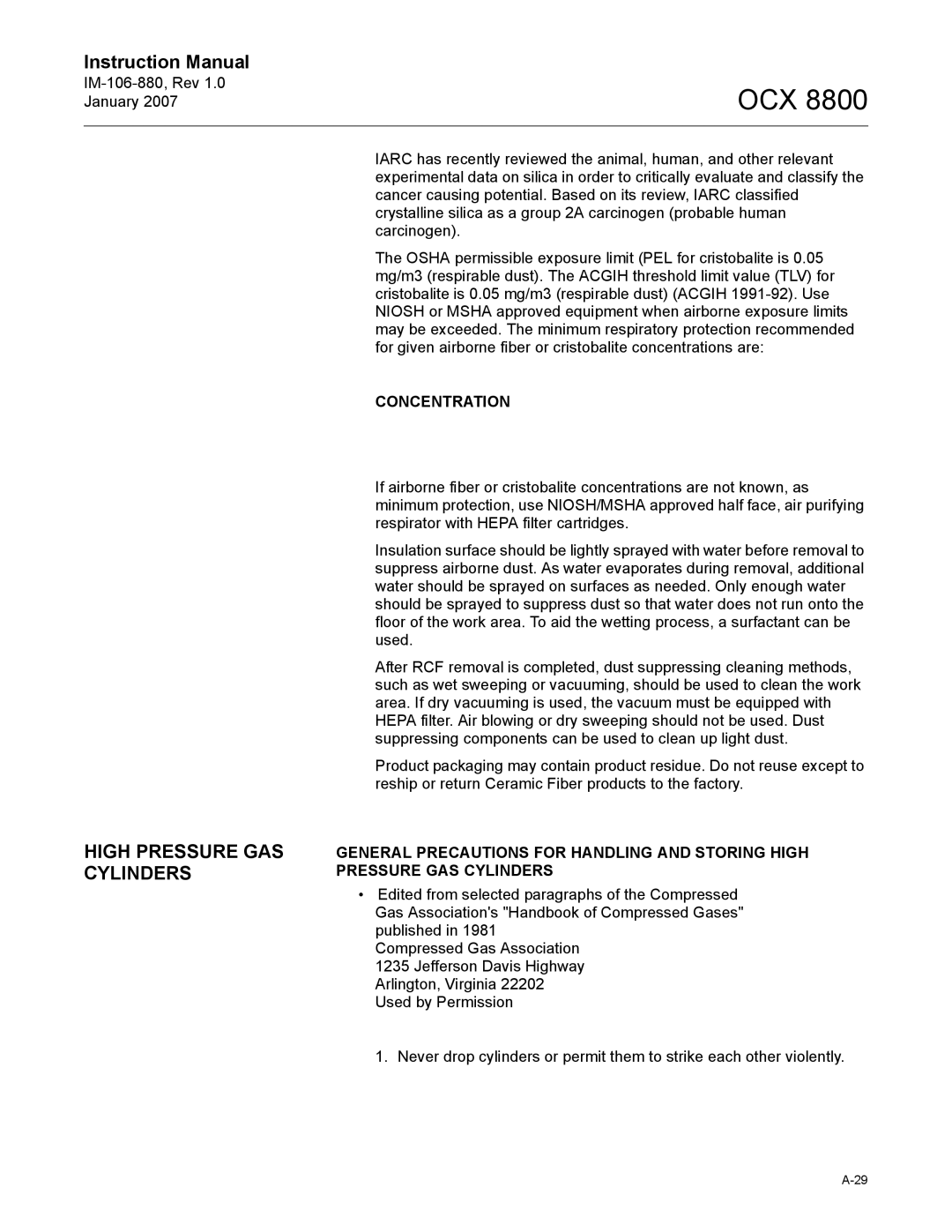Instruction Manual
OCX 8800
HIGH PRESSURE GAS CYLINDERS
IARC has recently reviewed the animal, human, and other relevant experimental data on silica in order to critically evaluate and classify the cancer causing potential. Based on its review, IARC classified crystalline silica as a group 2A carcinogen (probable human carcinogen).
The OSHA permissible exposure limit (PEL for cristobalite is 0.05 mg/m3 (respirable dust). The ACGIH threshold limit value (TLV) for cristobalite is 0.05 mg/m3 (respirable dust) (ACGIH
CONCENTRATION
If airborne fiber or cristobalite concentrations are not known, as minimum protection, use NIOSH/MSHA approved half face, air purifying respirator with HEPA filter cartridges.
Insulation surface should be lightly sprayed with water before removal to suppress airborne dust. As water evaporates during removal, additional water should be sprayed on surfaces as needed. Only enough water should be sprayed to suppress dust so that water does not run onto the floor of the work area. To aid the wetting process, a surfactant can be used.
After RCF removal is completed, dust suppressing cleaning methods, such as wet sweeping or vacuuming, should be used to clean the work area. If dry vacuuming is used, the vacuum must be equipped with HEPA filter. Air blowing or dry sweeping should not be used. Dust suppressing components can be used to clean up light dust.
Product packaging may contain product residue. Do not reuse except to reship or return Ceramic Fiber products to the factory.
GENERAL PRECAUTIONS FOR HANDLING AND STORING HIGH PRESSURE GAS CYLINDERS
•Edited from selected paragraphs of the Compressed Gas Association's "Handbook of Compressed Gases" published in 1981
Compressed Gas Association
1235 Jefferson Davis Highway Arlington, Virginia 22202 Used by Permission
1. Never drop cylinders or permit them to strike each other violently.
